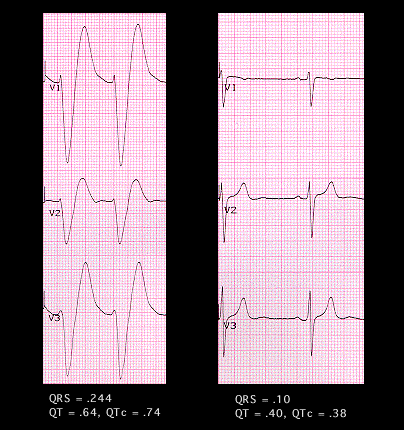
The tracing on the left is the same as that shown on the previous page. The rate is 90 and there may be a sinus P wave at the end of the T wave. The tracing on the right was recorded several days later, following recovery. The rate is now 52, the QRS complex is normal in both shape and duration and the sinus P wave is clearly seen before each QRS complex. The prolongation of the QT and QTc intervals in the tracing on the left is due almost entirely to the QRS prolongation.
